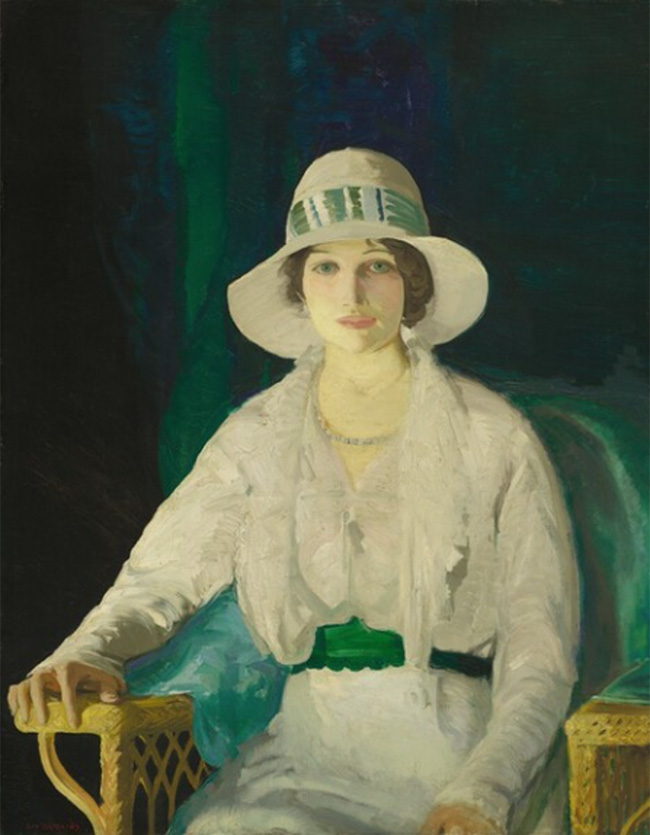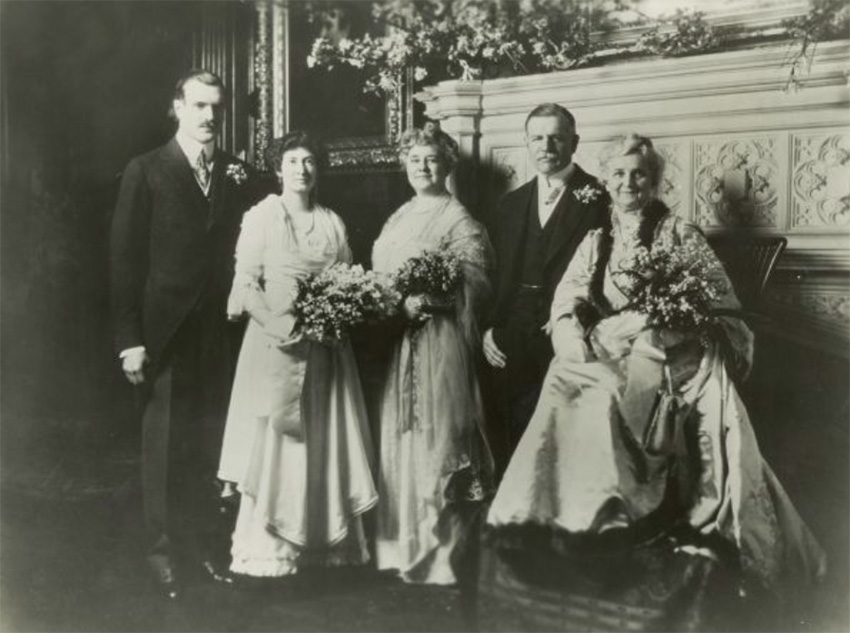Reaper inventor’s grandson and his wife, a sculptor and actress, support the arts.
Cyrus Hall McCormick III (1890-1970)
Florence Sittenham McCormick (1892-1979)
You might say Cyrus Hall McCormick III reaped the benefits of having a famous and inventive grandfather. His name opened many doors, from colleges and companies to politics and government.
In the 1830s, his namesake paternal grandfather, Cyrus Hall McCormick Sr., invented the McCormick reaper used by farmers to harvest crops mechanically. His invention revolutionized agriculture, freeing up laborers to work in factories, and allowing farms to become larger and more productive. By the late 1850s, Cyrus Sr. was a wealthy man. In 1858, the Chicago Daily Press referred to him as “the massive Thor of industry.”

Cyrus III was born in 1890 to Cyrus Hall McCormick Jr. and the former Harriet Bradley Hammond. In 1902, J. P. Morgan merged the McCormick Harvesting Machine Company and the Deering Harvester Company, creating the first worldwide group in agricultural machinery: the International Harvester Company. Cyrus Jr. became its president.
Cyrus III graduated from Princeton in 1912 and was a Rhodes scholar at the University of Oxford from 1912 to 1914. He then joined International Harvester and was named vice president and a director. In 1915, he married Dorothy Caroline Linn, and they had a son, Lawrence Robert McCormick. During World War I, Cyrus served as a lieutenant in the Aviation Division of the Signal Corps.
In 1930, Cyrus commissioned Randall Davey, an influential early 20th century artist, to paint his portrait. During his visits to the artist’s studio in Santa Fe, New Mexico, Cyrus and the artist’s wife, Florence, fell in love. A year later, he and Florence divorced their spouses and married in Havana, Cuba. Florence’s parents were the sole witnesses. Cyrus’s parents were vacationing in Rome and heard the ceremony over a transatlantic telephone.

Florence was born in Red Hook, New York, on May 22, 1892, the daughter of William Sittenham and the former Dora Nicks. She graduated from Miss Dana’s Finishing School in Morristown, N.J., and studied sculpture under the artist Alexander Archipenko in New York. She married Randall, a close friend of Ashcan artists George Bellows and John Sloan, in 1912, and they had a son, William, in 1913. During the next few years, she appeared in silent movies, including When Knighthood was in Flower in 1922, with Marion Davies. A biographer once called her “beautiful, generous, and strong-willed.”
The Randall Davey home in Santa Fe is now an Audubon sanctuary and historic property. In the living room is a photo of a stunning portrait of Florence painted by Bellows.
The docent of the Davey house, Bob Basler, tells the story behind the artwork:
“One evening in 1914, Bellows and Davey were playing pool, and they decided to make it interesting. Since they were both artists, they agreed the loser would paint a portrait of the winner’s wife,” the docent posted on the sanctuary’s website. “Davey won and this portrait was the result.” But after Florence left Randall and married Cyrus, the docent wrote, “Randall was so embittered … that he methodically destroyed every portrait he had ever done of Florence.” Today, Bellows’ portrait of Florence hangs in the National Gallery of Art.
Cyrus retired from International Harvester in 1931 and moved to Santa Fe. In the 1940s, he was a Republican national committeeman from New Mexico. He headed the automotive division of the Office of Price Administration, established by President Franklin D. Roosevelt in 1941 to control prices and rents after World War II broke out. He served as a major in the Army ordinance division.
During their years together, Cyrus and Florence invested in art and supported artists. He died March 30, 1970, in Hartford, Connecticut, at age 79. When she died, at age 87, in August 1979, she left much of their extensive collection to the Art Institute of Chicago.
Florence established a fund in The Trust for the advancement and support of the visual arts.
